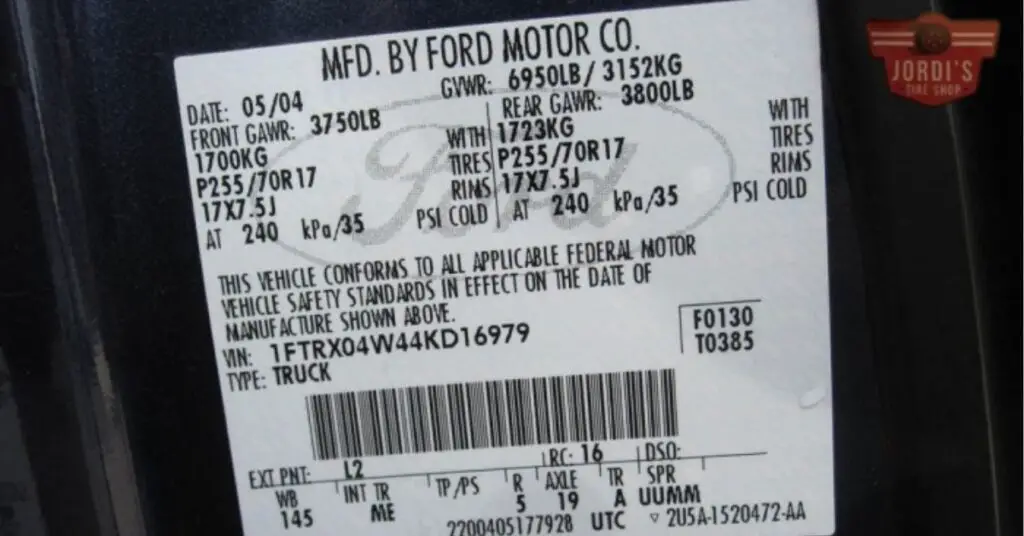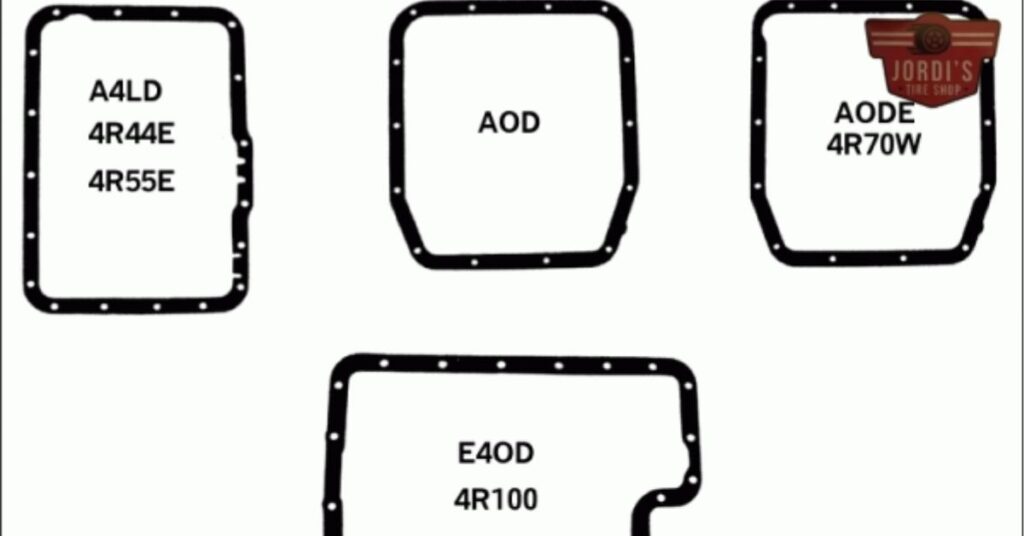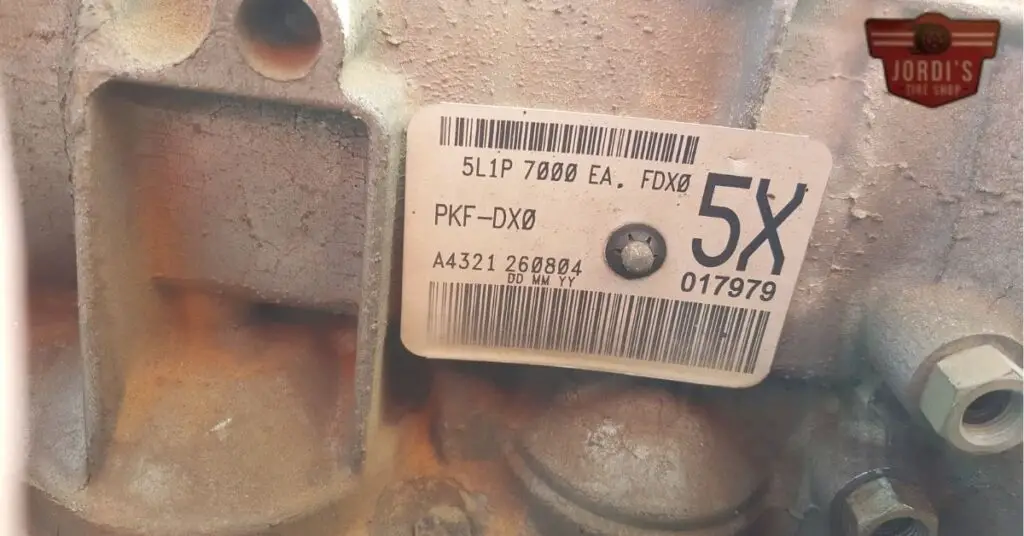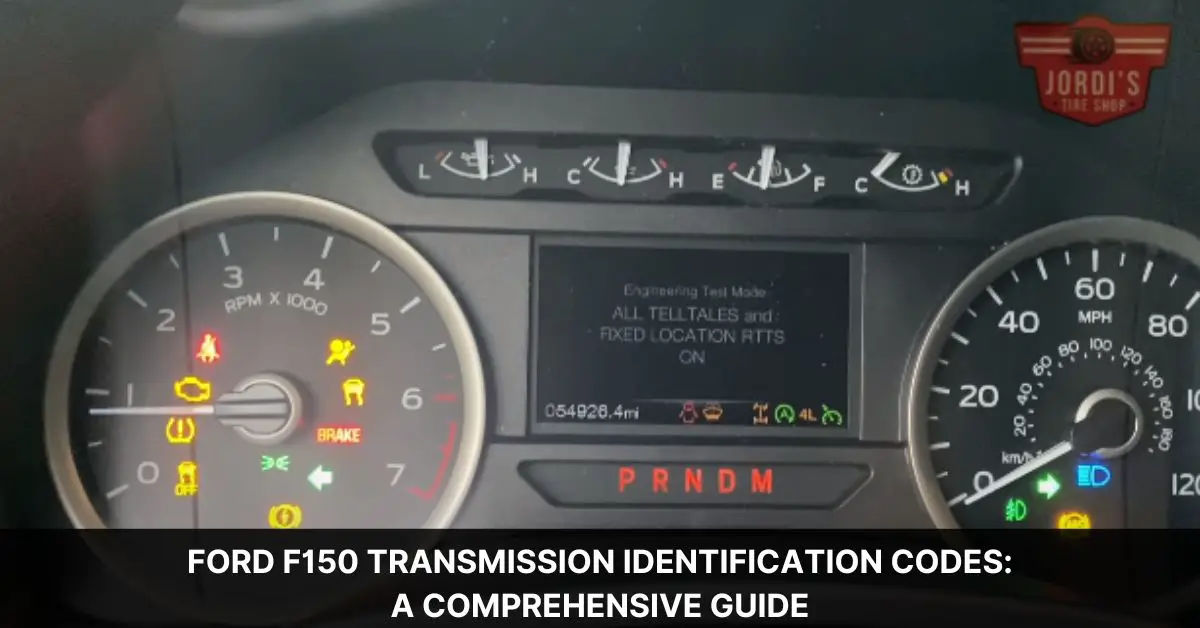If you’ve ever found yourself peering under the hood of a Ford F150, you might’ve wondered about the maze of codes stamped across various parts. Among these, the transmission identification codes hold a key to understanding more about what powers your ride. It’s like a secret language, telling the tale of your truck’s capabilities, origins, and more. We’re here to decode that language, making it simpler for every Ford enthusiast out there.
Deciphering these codes isn’t just about satisfying curiosity; it’s about arming yourself with knowledge. Whether you’re troubleshooting, planning upgrades, or just aiming to know your truck better, understanding these codes can be incredibly empowering. So, let’s dive into the world of Ford F150 transmission identification codes together, unraveling the mysteries that make our trucks not just vehicles, but stories on wheels.
Understanding Ford F150 Transmission Identification Codes

Diving into the world of Ford F150 transmission identification codes, we uncover a realm where every digit and letter holds significance. These codes, often perceived as puzzling sequences, are indeed the key to understanding a vast array of specifications about your Ford F150’s transmission. They tell tales of the transmission’s design, year of manufacture, and specific features tailored to enhance driving experience and performance.
The code typically starts with letters indicating the transmission series, such as “E” for automatic transmissions and “M” for manual. Following these are numbers which detail the design sequence and model year, acting as a direct link to the transmission’s blueprint. For example, a code beginning with “E40D” signifies an automatic model designed for heavy-duty performance, primarily seen in models from the late 1980s and 1990s.
Deciphering these codes requires accessing a reliable source or database that lists Ford’s transmission codes and their corresponding meanings. Various online forums and official Ford documentation provide extensive insights into these codes, offering a treasure trove of information for enthusiasts aiming to pinpoint the specifics of their truck’s transmission.
The importance of correctly identifying these codes cannot be overstated. Whether you’re troubleshooting, considering upgrades, or simply curious about your truck’s inner workings, these codes offer a clear path to understanding the engineering marvel that is the Ford F150 transmission. By mastering the language of transmission identification codes, we unlock the potential to make informed decisions, ensuring our trucks are not just stories on wheels, but legends of reliability and performance on the road.
Locating the Transmission Identification Codes

Finding the transmission identification codes on a Ford F150 isn’t as daunting as it might initially seem. These codes are the key to unlocking valuable information about the truck’s transmission, including its design and manufacturing details. To ensure that enthusiasts can navigate this process with ease, we’ve outlined the most effective steps to locate these codes.
Firstly, consult the owner’s manual. The manual often contains diagrams and instructions for locating the transmission identification code. It’s the quickest way to start since the manual is tailored specifically to the model of the truck.
If the manual doesn’t provide the necessary details, the next step is to inspect the transmission itself. The identification codes are usually stamped on a plate attached to the transmission case. Depending on the model and year of the Ford F150, this plate can be found on the side, near the vehicle’s serial number, or on the transmission pan’s surface. A flashlight and a clean rag might be essential tools for this task, as these plates can sometimes be obscured by dirt or difficult to see without proper lighting.
Another reliable method is to check the door pillar on the driver’s side. There, a sticker lists essential details about the truck, including a section for the transmission code. This method is particularly useful for those who prefer not to venture under their truck.
For those seeking a deeper dive into the specifics of their Ford F150’s transmission, online databases and forums host a wealth of information. By inputting the transmission identification codes found, enthusiasts can access detailed specifications and compatibility information. It’s a fantastic way to connect with a community of Ford F150 owners who share insights and advice.
Following these steps, locating the transmission identification codes on a Ford F150 becomes a straightforward task. Once found, these codes unlock a deeper understanding of the truck’s capabilities, aiding in troubleshooting, upgrades, and fostering a greater appreciation for what makes the Ford F150 a notable vehicle in the automotive landscape.
Deciphering Ford F150 Transmission Identification Codes
After finding the transmission identification codes on your Ford F150, you might wonder what these alphanumeric sequences signify. Let’s dive into deciphering these codes to unlock the specifics of your truck’s transmission, an essential step for precise troubleshooting and upgrades.
Understanding the Components
Each segment in the transmission identification code holds specific information. Typically, these codes consist of a series of letters and numbers, each providing insights into the transmission’s characteristics:
- Prefix: This part usually indicates the transmission model, which is crucial for identifying the type of transmission your F150 has, e.g., “E” for E4OD.
- Application Code: Reflects the intended use or the vehicle model the transmission is designed for, helping ensure compatibility.
- Year Code: A letter corresponds to the year the transmission was manufactured. This information is vital for identifying the age of the transmission and potential wear.
- Plant Code: Indicates where the transmission was assembled. This helps in tracing the origin in case of recalls or known issues from specific plants.
- Serial Number: A unique identifier for each transmission. It’s useful for warranty claims and when ordering parts.
Utilizing Online Resources
Armed with your code, turning to online resources can simplify the decoding process. Several websites and forums dedicated to Ford vehicles offer extensive databases where you can match your code to detailed transmission specifications. These platforms not only provide the meaning of each segment but also offer additional insights into compatibility, common issues, and upgrade options.
Understanding your Ford F150’s transmission identification code not only aids in troubleshooting and parts selection but also enriches your knowledge about your vehicle’s functionality. With this information, you’re better equipped to maintain and enhance your F150’s performance, ensuring a smooth and reliable driving experience.
Differences Across Ford F150 Models

Diving deeper into the variability of Ford F150 transmission identification codes, it’s crucial to recognize the diversification across various models. Each F150 model year brings its unique specifications, contributing to the complexity of understanding these vehicles. We aim to dissect these differences to enhance your ability to identify and differentiate between the transmissions of different F150 models effectively.
Firstly, the Year Codes play a pivotal role. Given the Ford F150’s long production history, the year code in the identification number helps pinpoint the exact year the transmission was manufactured. This is particularly useful when sourcing replacements or upgrades, as compatibility heavily relies on the production year.
Next, the Transmission Type comes into play. The Ford F150 has been equipped with several types of transmissions throughout its generations, including manual, automatic, and electronic variants. Each type has its unique set of identification codes. For instance, the 4-speed 4R75E automatic transmission, commonly found in models from the mid-2000s, will have a different identification code compared to the 10-speed 10R80 automatic transmission seen in recent models.
Moreover, Model-specific Codes add another layer of specificity. These codes can indicate particular F150 variants, such as the SVT Raptor or the more recent F150 Lightning, which both have distinct transmission configurations tailored to their performance requirements.
Finally, understanding the Plant Code is essential. This segment of the transmission identification code reveals where the transmission was assembled. Since Ford has numerous assembly plants worldwide, this code helps trace the transmission’s origin, indirectly affecting its design and compatibility.
By grasifying these differences in transmission identification codes across Ford F150 models, pinpointing the exact transmission for troubleshooting, replacement, or upgrade becomes significantly more manageable. When looking for detailed compatibility and specifications, consulting online resources or a dealership’s parts department offers the most precise information.
Common Issues and Solutions

Following our guide on Ford F150 transmission identification codes, we’ll explore common issues associated with these transmissions and offer practical solutions. Recognizing these problems early can prevent more severe issues down the line, saving time and money.
Slipping Transmission
A slipping transmission often manifests as a delay in acceleration or a feeling of the gears changing for no apparent reason. One solution involves checking the transmission fluid level and quality. Low or dirty fluid can cause slipping, so replacing it might resolve the issue. If the problem persists, it might be necessary to consult a professional mechanic for a deeper inspection.
Hard Shifts
Experiencing hard shifts, where changing gears feels more abrupt than smooth, can indicate a problem with the transmission’s electronic systems. Resetting the transmission’s computer by disconnecting the battery for 30 minutes might help. Alternatively, updating the software through a dealership can correct these electronic glitches.
Overheating Transmission
Transmissions can overheat due to excessive towing, carrying heavy loads, or insufficient fluid. Installing an auxiliary cooler can significantly reduce high temperatures, extending the life of the transmission. Regularly checking and replacing the transmission fluid as needed will also help prevent overheating.
Transmission Fluid Leaks
Detecting spots or puddles beneath the truck might indicate a fluid leak. Common leak points include the transmission pan, fluid lines, or seals. Tightening the components or replacing damaged seals and gaskets usually fixes the leak. It’s crucial to address leaks immediately to avoid running the transmission with low fluid levels.
Addressing these common issues promptly can keep the Ford F150’s transmission in optimal condition. When in doubt, consulting a professional or referring back to the transmission identification codes for troubleshooting can help identify specific solutions based on the transmission model and year, ensuring accurate and efficient repairs.
Conclusion
We’ve walked through the ins and outs of Ford F150 transmission identification codes and why they’re crucial for anyone looking to keep their vehicle in top shape. Understanding these codes isn’t just about knowing what’s under the hood—it’s about taking proactive steps toward maintenance and repair. By tackling common transmission issues early on and using the identification codes to guide us we’re not just fixing problems. We’re ensuring our F150 runs smoothly for miles to come. Remember the tips we’ve shared and don’t hesitate to reach out to professionals when in doubt. Here’s to many more journeys with your trusty F150 by your side!
Related Posts:
- Exhaust Fluid System Fault: Causes, Symptoms, and Solutions
- Ford F150 Transmission Identification Codes: A Comprehensive Guide
- Ford Outside Temperature Sensor Reset: A Quick Guide
- Full Accessory Power Active Meaning: Understanding Your Vehicle’s Electrical System
- How to Bypass Ford Speed Limiter: Tips and Tricks
- What Year Ford Fusion Parts are Interchangeable: A Quick Guide

